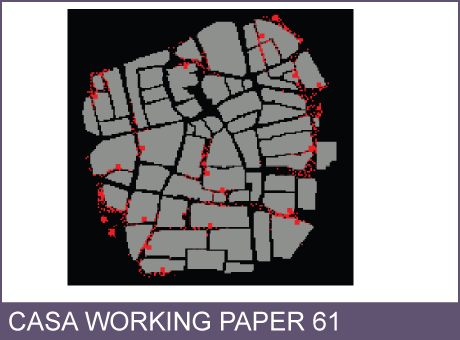CASA Working Paper 61

1 January 2003
Agent-Based Pedestrian Modelling
When the focus of interest in geographical systems is at the very fine scale, at the level of streets and buildings for example, movement becomes central to simulations of how spatial activities are used and develop. Recent advances in computing power and the acquisition of fine scale digital data now mean that we are able to attempt to understand and predict such phenomena with the focus in spatial modelling changing to dynamic simulations of the individual and collective behaviour of individual decision-making at such scales.
In this Chapter, we develop ideas about how such phenomena can be modelled showing first how randomness and geometry are all important to local movement and how ordered spatial structures emerge from such actions. We focus on developing these ideas for pedestrians showing how random walks constrained by geometry but aided by what agents can see, determine how individuals respond to locational patterns. We illustrate these ideas with three types of example: first for local scale street scenes where congestion and flocking is all important, second for coarser scale shopping centres such as malls where economic preference interferes much more with local geometry, and finally for semi-organised street festivals where management and control by police and related authorities is integral to the way crowds move.
This working paper is available as a PDF. The file size is 961KB.
Authors: Michael Batty
Publication Date: 1/1/2003
 Close
Close

